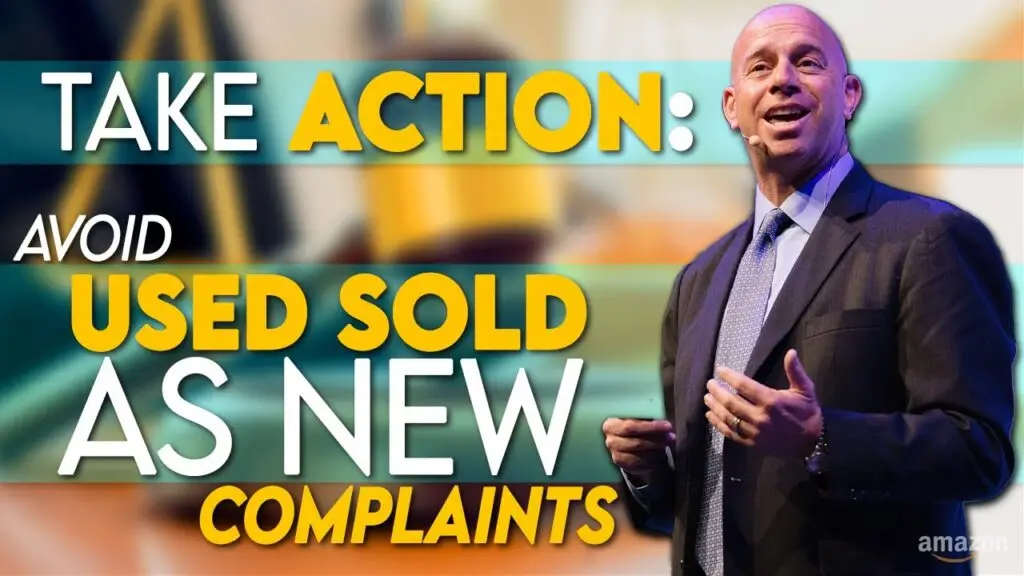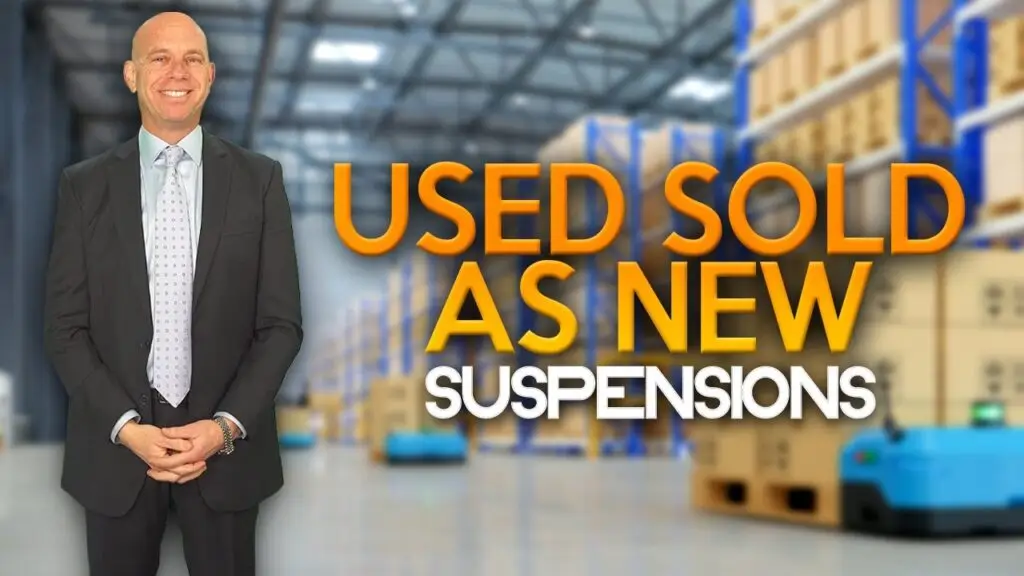Used Sold As New Complaints on Amazon
Amazon enforces strict policies to ensure customers receive new products as described. If you’ve been accused of selling used items as new, your listings may be removed or your account suspended. Amazon Sellers Lawyer focuses on appealing suspensions, reinstating listings, and protecting your business from unfair complaints.

What Is a Used Sold As New Complaint on Amazon?
A Used Sold As New complaint arises when a customer believes they received a used, refurbished, or previously opened product instead of a brand-new item. These complaints often stem from:
- Damaged Packaging – Even if the product is new, worn or damaged packaging may lead to complaints.
- Returned & Resold Products – Items returned by customers may be mistakenly resold as new.
- Warehouse Handling Issues – Amazon FBA warehouses sometimes mix up inventory or send used items instead of new.
- Product Condition Misinterpretation – A misunderstanding by the buyer about the item's original condition.
Consequences of a Used Sold As New Complaint
Listing Removal – Amazon may deactivate flagged listings immediately.
Account Suspension – Repeated complaints can lead to account suspension.
Loss of Revenue – Downtime due to deactivated listings or suspension results in financial losses.
Negative Seller Reputation – Customer complaints can damage seller performance metrics and brand credibility.

How to Avoid Used Sold As New Complaints
Inspect Inventory Thoroughly – Ensure all items are factory-sealed and in pristine condition before shipping.
Use Proper Packaging – Replace damaged packaging and ensure all products appear brand new.
Track & Separate Returns – Implement a strict system to prevent returned items from being resold as new.
Monitor FBA Shipments – Check your fulfillment center’s handling to prevent warehouse mix-ups.
Respond Quickly to Customer Complaints – Address concerns immediately to prevent negative feedback.
The Different Categories of “Used”
Once you get into the category of used items, things get a little bit trickier. There are a few different stages of “used” that Amazon lists. Here is the company’s description of each of their item categories, courtesy of Amazon.com:
Used – Like New:
An apparently untouched item in perfect condition. Original protective wrapping may be missing, but the original packaging is intact and pristine. There are absolutely no signs of wear on the item or its packaging. Instructions are included. Item is suitable for presenting as a gift.
Used – Very Good:
A well-cared-for item that has seen limited use but remains in great condition. The item is complete, unmarked, and undamaged, but may show some limited signs of wear. Item works perfectly
Used – Good:
Use only if noted in the Category-Specific Condition Guidelines. The item shows wear from consistent use, but it remains in good condition and works perfectly. It may be marked, have identifying markings on it, or show other signs of previous use.
Used – Acceptable:
Use only if noted in the Category-Specific Condition Guidelines. The item is fairly worn but continues to work perfectly. Signs of wear can include aesthetic issues such as scratches, dents, and worn corners. The item may have identifying markings on it or show other signs of previous use.
As you can see, these descriptions allow for a little bit of leeway and judgment. It isn’t as simple as used vs. new, where the item still in the packaging is considered new, and an item taken out is considered used. We don’t see many cases of sellers getting suspended for mislabeling used items, but it’s still important to be careful when labeling. Even if you aren’t suspended for a complaint, a bad customer rating can be detrimental to your sales. Make sure the item is as close to how you labeled it as possible so the customer gets what they expect, otherwise you could be in for a bad review.

How Amazon Sellers Lawyer Can Help
Appealing Used Sold As New Complaints – We create strong appeals for reinstating your account or listings.
Legal Defense Against False Complaints – If a customer falsely claims your product was used, we fight back.
Amazon Compliance Guidance – We help you maintain proper inventory management to avoid future issues.
Representation in Disputes – If necessary, we defend your business against legal claims.
Steps to Take If Your Amazon Account Is Suspended for Used Sold As New
1 Review the Suspension Notice – Understand why your account or listing was flagged.
2 Gather Evidence – Collect invoices, supplier details, and proof that your products were new.
3 Check Customer Complaints – Analyze customer feedback to identify the source of the issue.
4 Submit a Plan of Action (POA) – Draft a professional appeal outlining corrective measures.
5 Contact Amazon Sellers Lawyer – Our team crafts persuasive appeals and fights for reinstatement.
Why Choose Amazon Sellers Lawyer?
- Experiences Team: Our attorneys focus on Amazon seller account reinstatements.
- Proven Success Rate: Thousands of sellers have regained their accounts with our help.
- Fast & Effective Appeals: Time is money—we work quickly to resolve your suspension.

